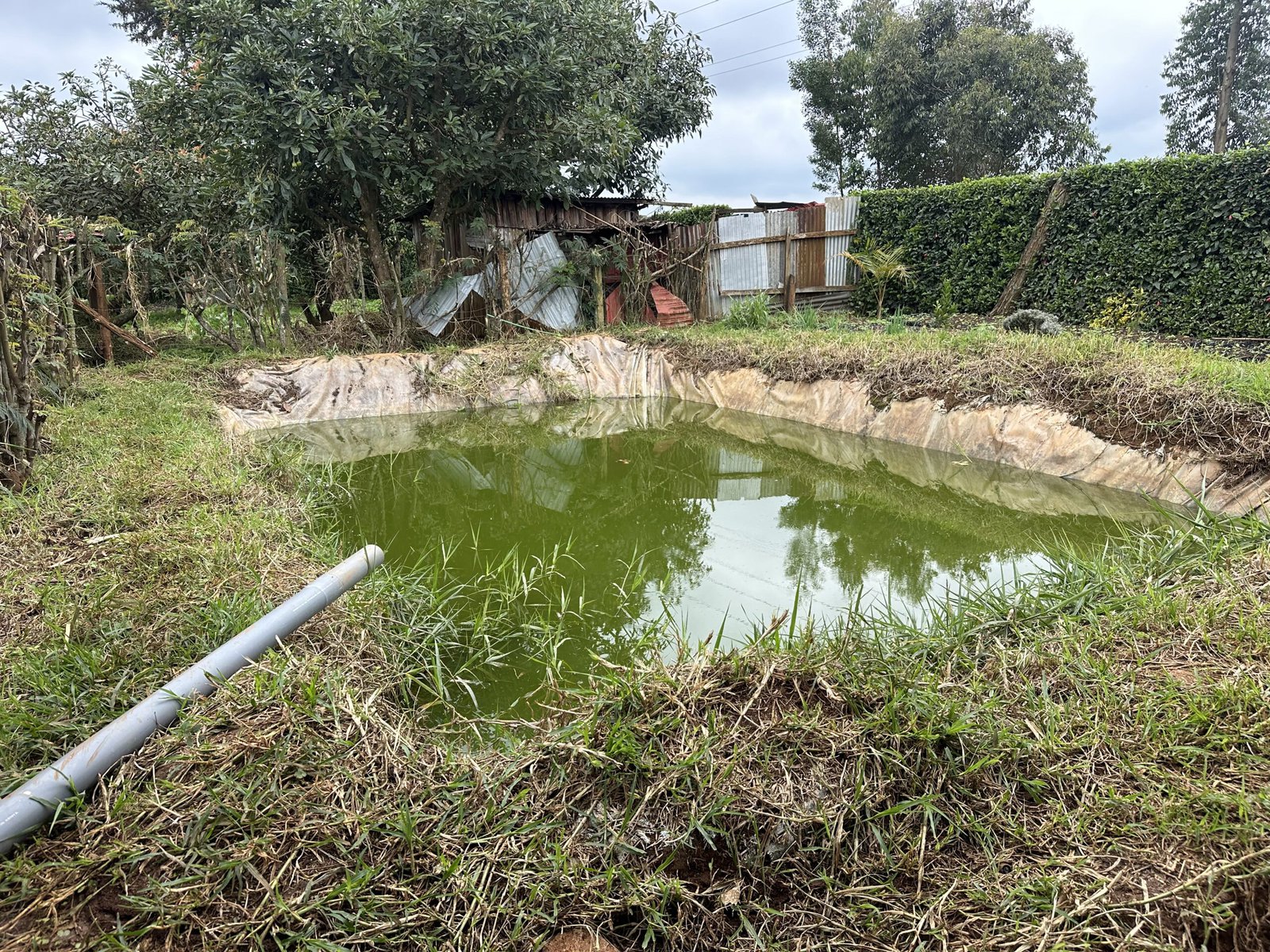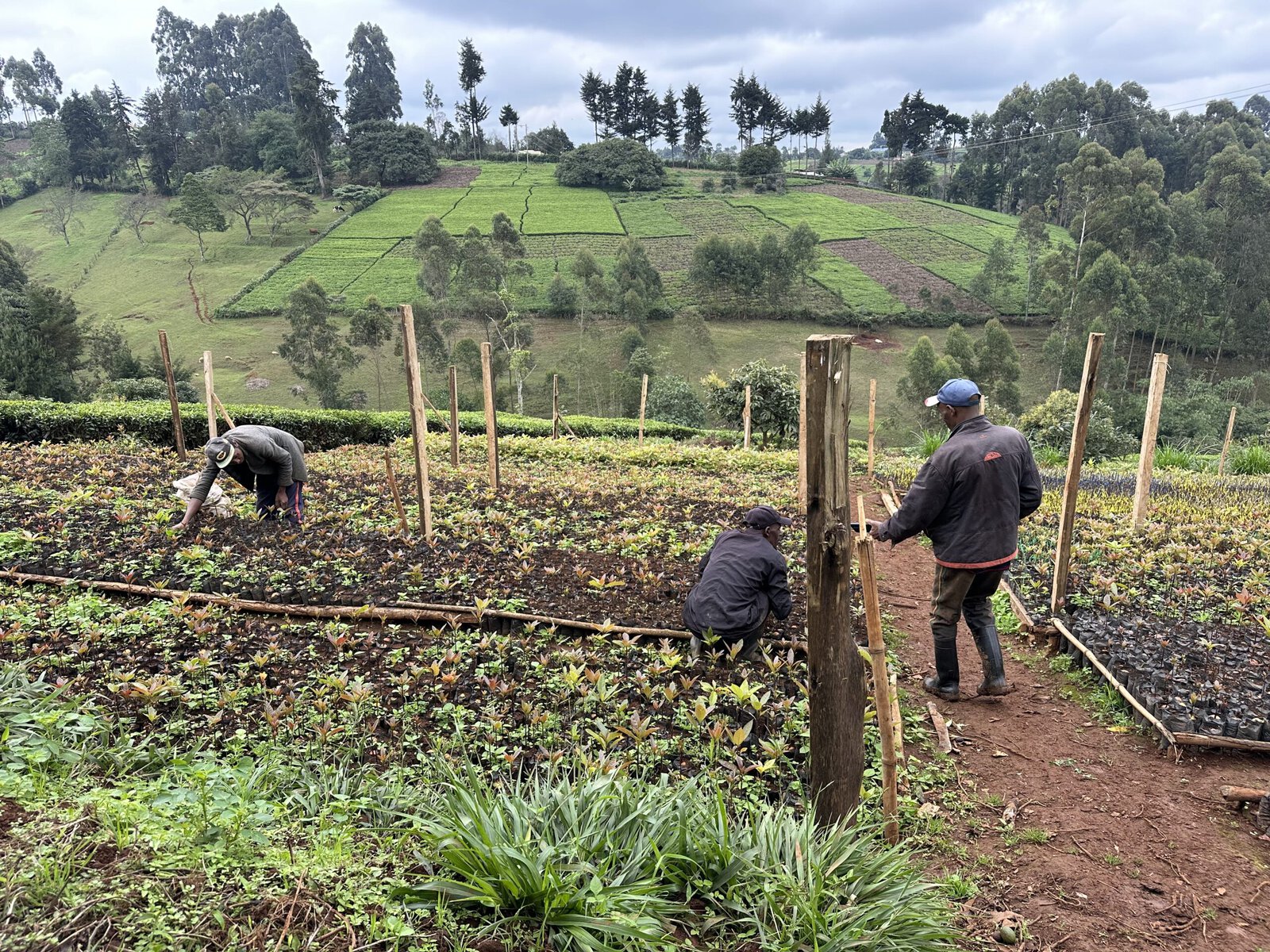For many years, Esther Wandia Kiguru lived a tough life of labor up in Kenya’s misty highlands. The single mother toiled away at her tea plantation on the steep hillsides of the Aberdare Mountains, earning a living to support her three children.
But that changed when local authorities and private businesses began to recognize the importance small-scale farmers like Wandia — whose land is in a watershed that supplies the majority of the capital city Nairobi’s drinking water — could have.
“I was an ordinary peasant farmer before,” says the 62-year-old, sitting beside her newly built, modern brick home in the hills. “But my life changed completely.”
In 2018, local authorities contacted Wandia in the hope of transforming the way that she managed her land. First, the officials offered to help to install a 50,000-liter reservoir that would allow her to collect rainwater and cultivate different types of crops such as avocados, bringing in greater profits while stabilizing the surrounding terrain.
Wandia, enticed by what was a rare opportunity in Kenya’s remote Muranga County, quickly agreed. “It was like a blessing from God,” she says.
The initiative was part of the Upper Tana-Nairobi Water Fund, which was launched in 2015 by the international nonprofit The Nature Conservancy to connect companies and communities in Kenya with the goal of cleaning up important water sources. The approach is showing a successful way of maintaining and even improving the supply of water to urban populations while simultaneously providing income to rural areas.
The Upper Tana River Basin, which spans 1.7 million hectares, supplies 95 percent of Nairobi’s drinking water, helps to sustain important biodiversity, drives agricultural activities that feed millions and provides half of the country’s hydropower output.

Yet high population growth in the basin over the past few decades as well as an increase in unsustainable agriculture mean that sturdy forests that previously prevented erosion have been replaced by short-term cash crops, and that water pollution has risen due to sediment being washed into the watershed and trash produced by locals. This is far from a local issue: The UN considers the issue of water quality degradation to be one of the main challenges societies across the planet will face during the 21st century.
The Water Fund, which uses a private-public financing model, takes investment from companies downstream in Nairobi and passes it onto farmers living in the watershed. In effect, Kenyan breweries and water companies that need reliable water in the city pay into the fund, which then disburses money to people upstream to buy tools and improve their practices in ways that conserve water and improve their livelihoods.
Crushed by negative news?
Sign up for the Reasons to be Cheerful newsletter.
“We’re working from top to tap,” says Edith Alusa, executive director at Upper Tana-Nairobi Water Fund Trust, which now manages the project.
All across the region, hundreds of thousands of small-scale farmers like Wandia have been given infrastructure like roof gutters, drainpipes, storage tanks and pans to collect rainwater. In turn, they must adopt more sustainable practices such as using organic fertilizers, diversifying their crops and avoiding planting crops like eucalyptus directly beside rivers and streams, which can increase erosion and sediment overflow.
Caro Nguru, who leads the project for Muranga County, one of four local authorities involved in the fund, says that the decision to provide tools, seeds and infrastructure rather than cash in particular has meant farmers are more motivated to change their behavior. “It’s more effective than money transfers,” she says.
After Wandia agreed to join the program, she sold her pigs, whose grazing does little to help prevent soil erosion, and started growing avocado, a valuable crop that helps fight erosion, and grafting seedlings for sale to neighboring farmers.
She now permanently employs three workers to help with the avocado tree grafting, producing as many as 700 per day. That’s already paid for her new home. And her gains have caught the attention of others: Five farmers along her dirt road alone have installed water collection pans like hers, and three neighboring farms have started avocado tree nurseries since hers took off.
“I have so many farmers in the area coming to ask me about it,” she says. “They’ve seen how it’s changed my fortunes.”
A decade on, the fund has had a tangible effect on the water supply, too. More than 27 million more liters of water will be flowing daily by 2025, as well as increasing reserves upstream. Nairobi authorities are set to save $250,000 a year from reduced filtration and sludge disposal costs thanks to the cleaner water arriving and a further $600,000 per year from avoided shutdowns of their hydropower facilities, which can occur if not enough clean water can be channeled downstream.

And by investing in local communities — some 300,000 small-scale farmers in Kenya are part of the efforts — rather than being forced to pay for expensive water treatment facilities, the project is highly cost-effective: The Water Fund Trust estimates that every $1 invested yields $2 worth of benefits.
Job Kihamba, who coordinates the Thika Dam, a 70-billion-liter water reservoir in the region that supplies Nairobi, says that these efforts over the past decade have had a visible impact on the water quality and have made his job easier.
“Keeping the land covered is wonderful,” he says. “It stops landslides and keeps sediment out of the water. The farmers play a very important role. You can see the improvement just with your eyes.”
Proponents argue that these efforts are also delivering environmental benefits that help the wider world, such as greater carbon sequestration and reduced threats to forests and biodiversity, on top of the boost to local incomes and water quality.
The model of encouraging private sector investment in rural areas has been praised as a win-win for business sustainability, easing the need for public investment even despite the clear public benefits.
“The water fund provides conservation as well as a strong business case,” says Bert de Bievre, technical secretary of the Quito Water Protection Fund (FONAG), which was established in 2000 as one of the first of its kind in the world. “It brings stable flows of funding.”
To underline the self-sustaining potential of the model, the Upper Tana-Nairobi fund has been run independently by the Trust since 2021. The Nature Conservancy has instead focused on expanding the model to other parts of the continent, including Dakar and Addis Ababa, among a total of 17 African water funds, according to Fred Kihara, the nonprofit’s Africa water funds director.
Yet for any such system to succeed, Alusa believes that getting high-level buy-in early on and finding quality, long-term partners is key. The Upper Tana-Nairobi fund, for example, sought support from regional governors and senior judges, she says, and made agreements with partners like the Nairobi City Water and Sewerage Company and East African Breweries Limited (EABL).
“In the genes of a water fund is this collaboration,” agrees De Bievre. “You have to build bridges. It brings together several stakeholders, it’s not one water user alone.”
Officials in both Ecuador and Kenya agree that the long-term success of a water fund requires continuous communication between farmers and other stakeholders to ensure they are still on board and to make sure local contexts are adjusted for.
“How can we optimize the farms and diversify them without destroying the forests?” says Alusa. “We need to be in partnership with the custodians of the land.”
“There’s no one recipe that is going to solve them all,” adds De Bievre.
Climate change, which is bringing more intense weather including powerful rains that can reduce water quality in reservoirs due to overflows, remains an ongoing issue that the fund can only do so much to address.
But the flow of finance from city corporations to the steep hillsides of rural Kenya has nonetheless shown that water funds can be impactful for all involved.
“There is growing belief in them,” says De Bievre. “Because the investors are really getting a return.”
The post How Lush Hillside Farms Are Protecting Nairobi’s Water Supply appeared first on Reasons to be Cheerful.




